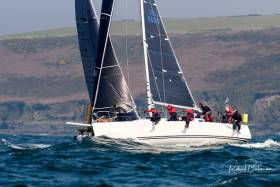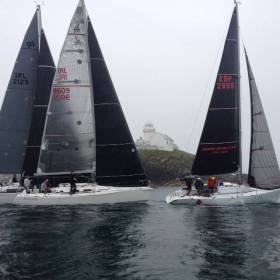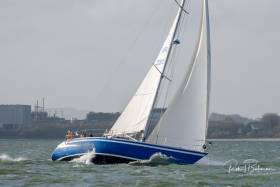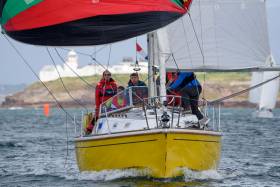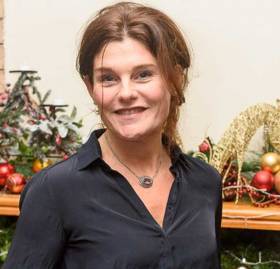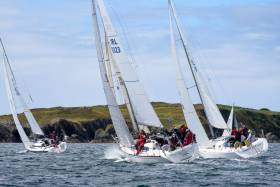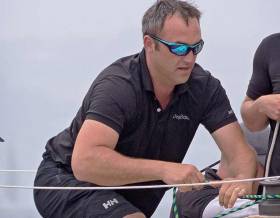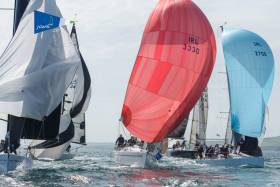Displaying items by tag: SCORA
The West Cork Sailing Festival kicks off this Saturday when SCORA will start an offshore race off Kinsale to Baltimore starting at 8 am. This replaces the traditional overnight race from Crosshaven, which had suffered from declining numbers in the past few years.
The cruiser fleet will be greeted by Baltimore Sailing Club who are hosting the 1720 Sportsboat “Baltimore Cup” series in the harbour on the Bank holiday Saturday and Sunday.
Baltimore Traders Regatta on Monday signals the start of the Calves Week series of races, called after the Islands that lie at the centre of most of the weeks sailing action, with a nod towards that other sailing event which leaves Cowes on the Isle of Wight on Saturday, heading for the Fastnet.
The four days of racing in Schull, sponsored by Frank Whelan’s “Gas Analysis Services” begins at midday on Tuesday, with a nightly presentation of prizes and live music on the main street.
Local regatta races on Saturday in Crookhaven and on Sunday in Schull, round off the extra-long week's activities which now extends to eight days.
13 yachts took to the start line this morning for SCORA's offshore race from Cork Harbour to Dunmore East writes Bob Bateman.
The start was postponed for one hour by Race Officer Barry Rose who finally got the fleet away off Roches Point at 8 am.
The brainchild of SCORA Commodore Johanna Murphy, the event is run by Great Island Sailing Club in conjunction with Waterford Harbour Sailing Club.
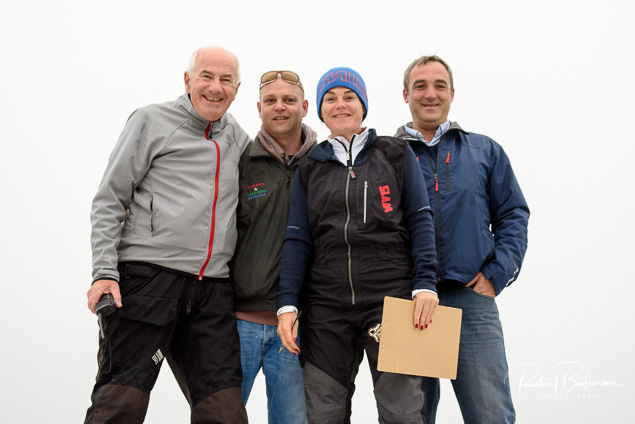 Race Officer Barry Rose (left) and his team; Darragh Connolly, Royal Cork,Johanna Murphy, Commodore SCORA and Kieran O’Connell of Royal Cork, Vice Admiral Keelboats
Race Officer Barry Rose (left) and his team; Darragh Connolly, Royal Cork,Johanna Murphy, Commodore SCORA and Kieran O’Connell of Royal Cork, Vice Admiral Keelboats
Waterford Harbour Sailing Club was represented on the line along with entries came from Royal Cork Yacht Club, Great Island Sailing Club and Kinsale Yacht Club.
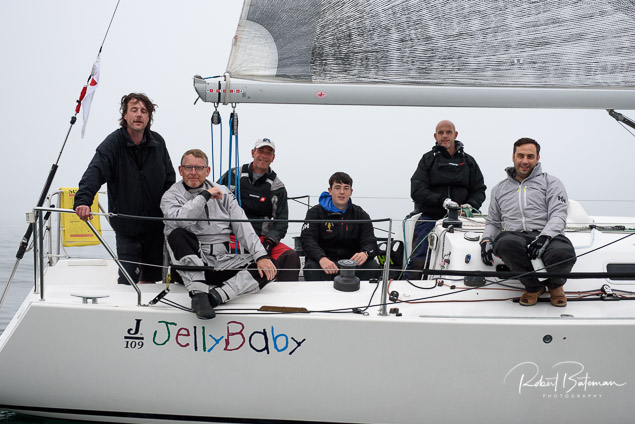
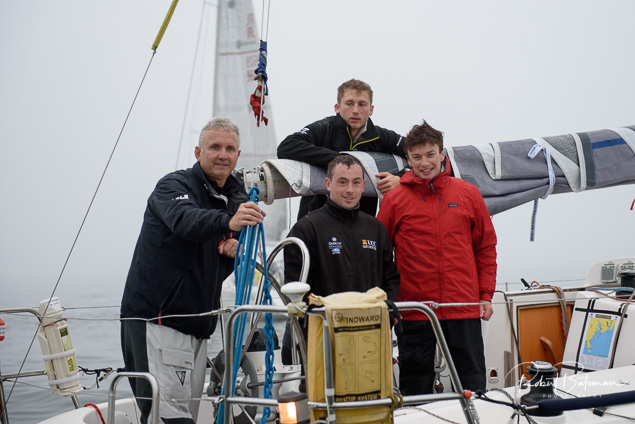

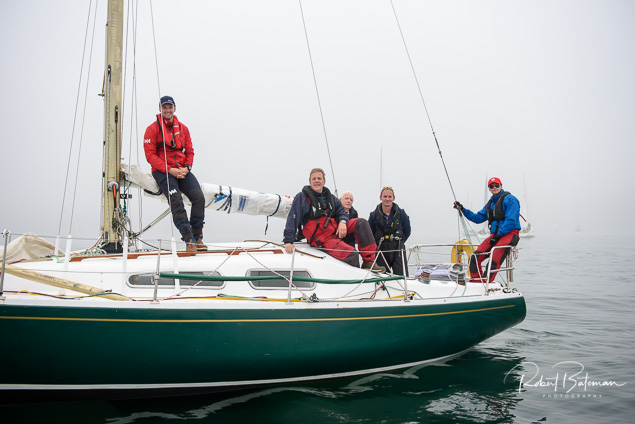
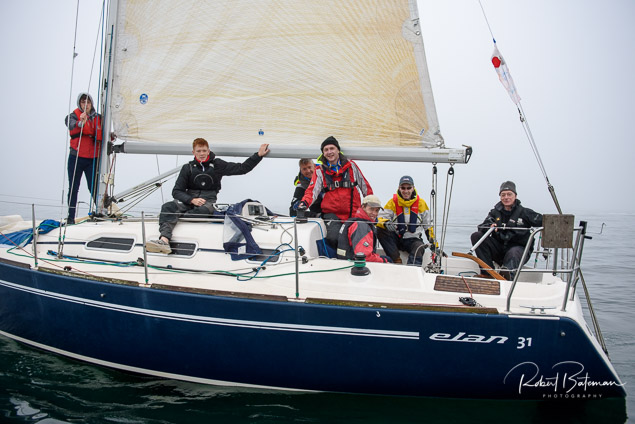
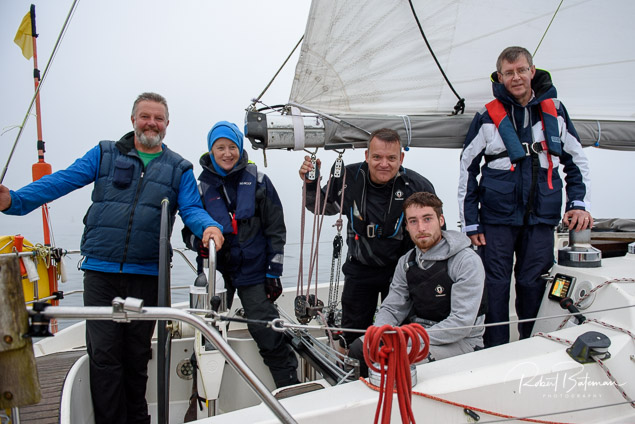
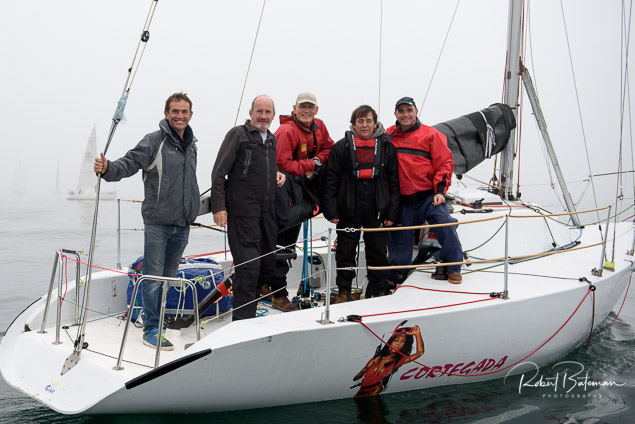

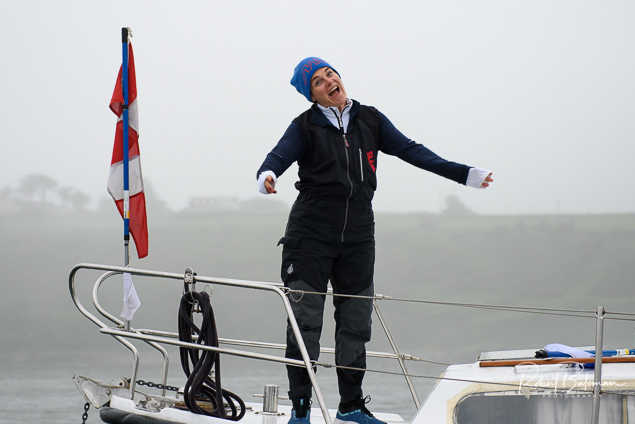
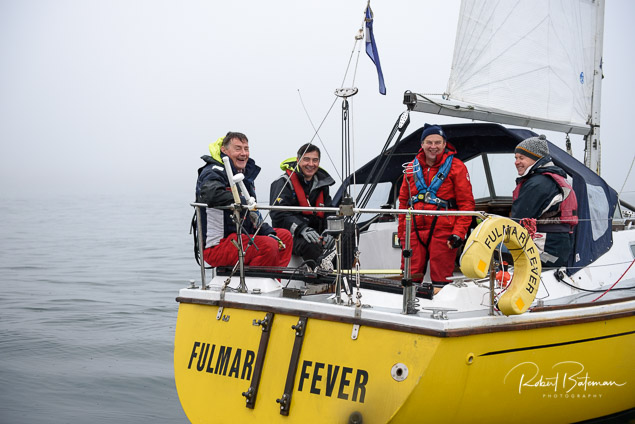

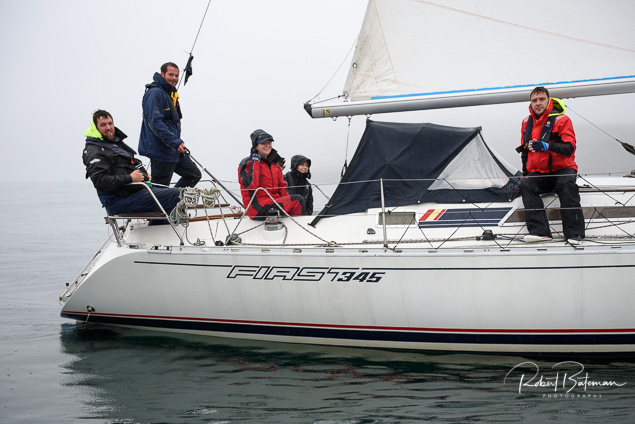
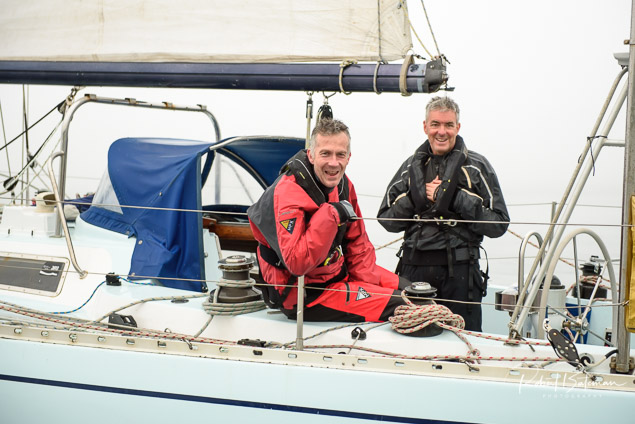
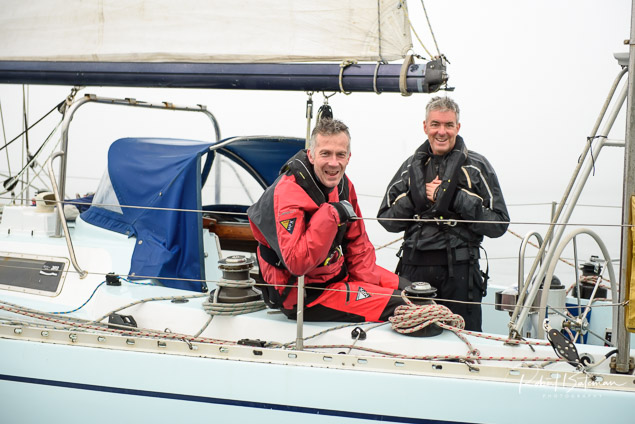
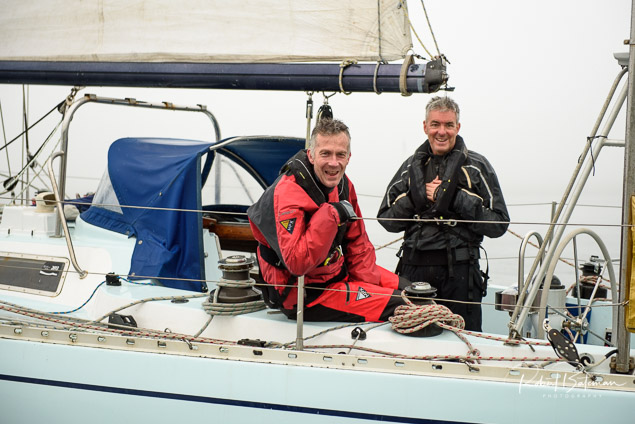
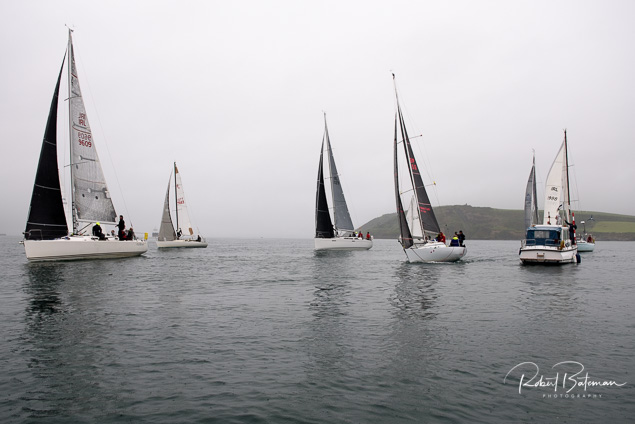
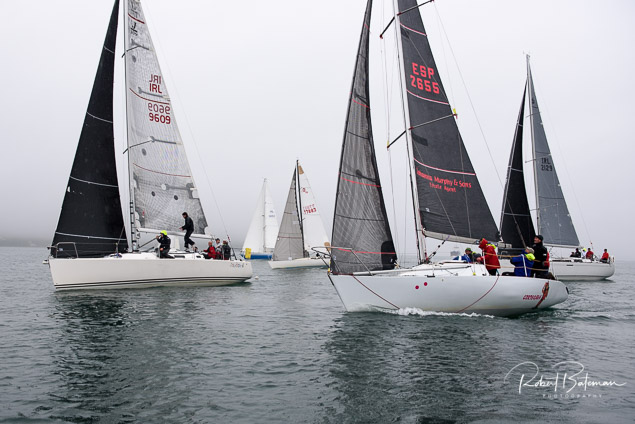
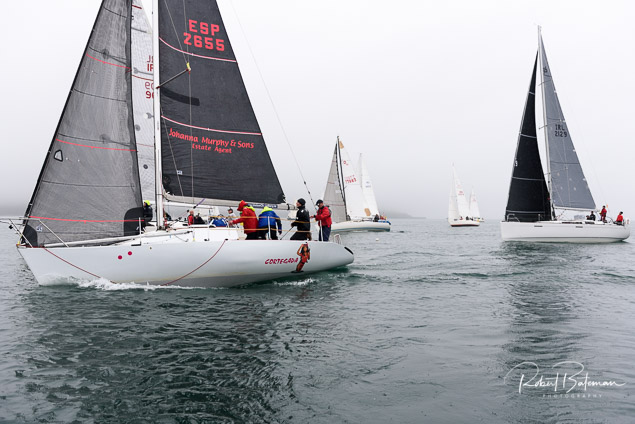
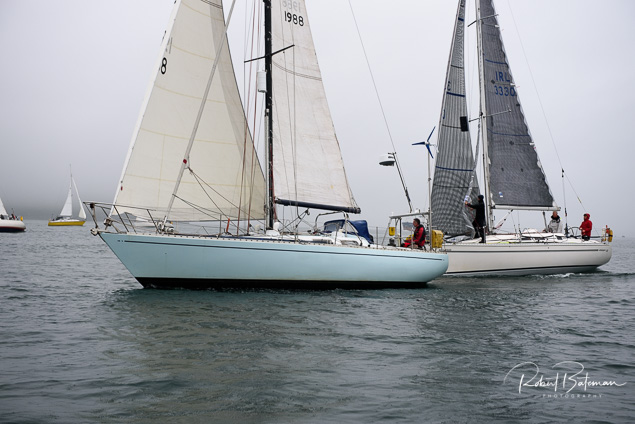
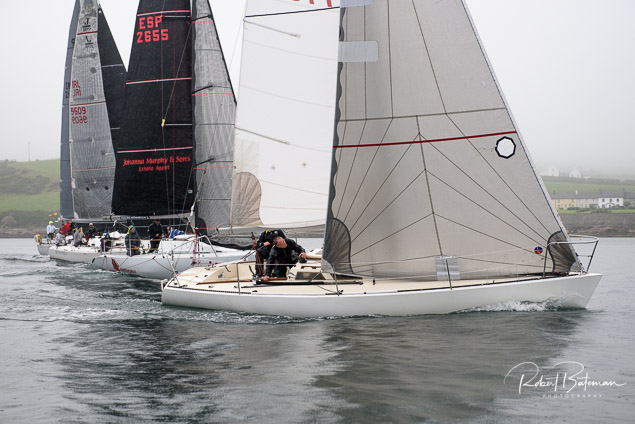
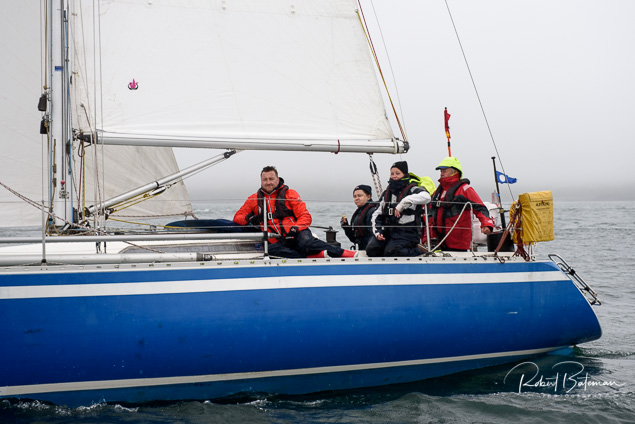
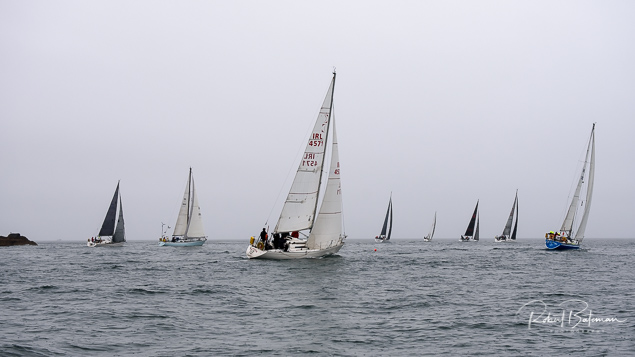 The SCORA fleet head east in light winds Photo: Bob Bateman
The SCORA fleet head east in light winds Photo: Bob Bateman
Cork sailor Noel Coleman always had a dream to do the Dun Laoghaire to Dingle Race and when the family acquired the heavy displacement Oyster 37 – a yacht which has already done a Round Ireland race – this seemed the ideal time to give it a try writes Bob Bateman.
As a build up for next month' 300-miler, Blue Oyster is on her way to sail in Kinsale Yacht Club’s Fastnet Race this weekend and will then sail in the SCORA race the following weekend from Cork Habour to Dunmore East.
Commodore of SCORA, Johanna Murphy says that the Waterford race has attracted a lot of interest and up to 25 yachts could be on the line. It’s A Great Island Sailing Club organised event and the early morning first gun is 6.55 on June 1st.
Following that race, Blue Oyster will continue northwards to Dublin be on the start line for the D2D at the National Yacht Club on June 12th.
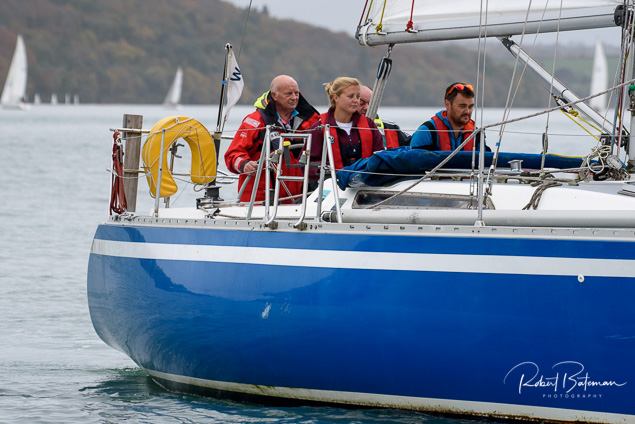 Blue Oyster is an Oyster 37
Blue Oyster is an Oyster 37
Noel’s daughter Karen is cutting short her round the World trip to join her father for the biennial offshore that is expected to attract 40 boats. Afloat's WM Nixon previewed the 2019 edition here.
Other members of the Blue Oyster crew will be daughter Louise and nephew Alan Coleman, John Molloy and Mark Murphy.
SCORA Sailors Heading East from Cork Harbour - For a Change!
Cork Harbour sailors are being offered a different opportunity this season – to turn left rather than right when they leave Roches’ Point at the mouth of the harbour…
This will be a new departure for Cork Harbour boats.
Apart from the annual race to Ballycotton, which was revived in 2017, they have mostly turned westwards to Kinsale and onto West Cork when racing.
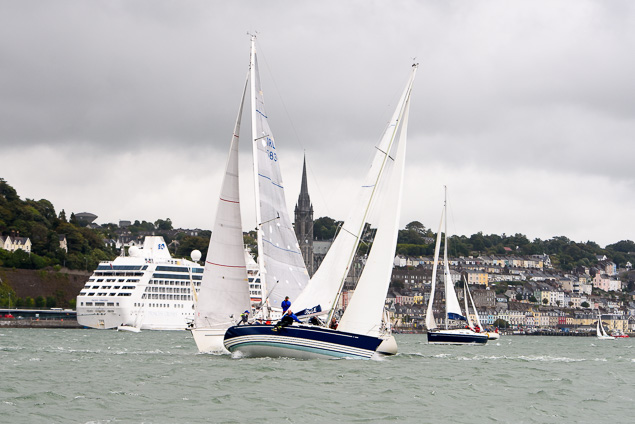 Derry Good's Xhale is a regular offshore sailor from SCORA having previously competed in Gas Rigs Race Photo: Bob Bateman
Derry Good's Xhale is a regular offshore sailor from SCORA having previously competed in Gas Rigs Race Photo: Bob Bateman
The South Coast Offshore Racing Association (SCORA) has included a new Coastal Race to dominate the June Bank Holiday Weekend for Cork Harbour sailors when Great Island Sailing Club will run a race to Dunmore East on the Waterford coastline.
“We are really happy to be running this race,” said South Offshore Racing Association Commodore Johanna Murphy, also Commodore at the Great Island Sailing Club in Cobh. “It’s the first time in many years that SCORA has ventured East for a race and Waterford Harbour Sailing Club will put on a great reception for all boats taking part.”’
The plan is to start the race at 8 a.m. on Saturday, June 1, at Roche’s Point.
Waterford Harbour Sailing Club will finish it at Dunmore East.
On the following day the SCORA Plan is for the Cork Harbour fleet to stop in Youghal for lunch to see the new pontoon they have on offer, according to Commodore Murphy.
The SCORA calendar for the season includes the Kinsale Spring Series, which starts this Sunday; Calves Week in Schull and the RCYC Autumn Series. The ‘Offshore League’ includes the Kinsale/Fastnet Race, the race to Dunmore East and the Kinsale/Baltimore ‘feeder’ race to Calves Week.
All White Sail Classes will be included in the SCORA Leagues, as well as the Spinnaker boats.
“SCORA ran a Sailwave Results software training day at the RCYC and Kinsale YC ran an evening about Class handicap bands,” according to the SCORA Commodore. “Also this year SCORA will be providing online registration for all boats wishing to race in any SCORA League. It will be mandatory to complete this form to be eligible for a result in 2019.”
The SCORA Committee, led by Commodore Johanna Murphy includes club representatives: Cian McCarthy of Kinsale YC; Mel Collins RCYC; Michael Murphy Treasurer/Schull Harbour SC; Henry Jeffries Monkstown Bay SC; Rene Wuben, Waterford Harbour SC and Kieran Dorgan Cove SC.
• Listen to the Podcast below
SCORA Runs Sailwave Results Software Training Day at Royal Cork
On Saturday Michael McCann ran a training course on the Sailwave results software in the Royal Cork Yacht Club writes Rear-Admiral Kieran O'Connell. The SCORA Course was attended by representatives of all SCORA clubs and I would like to thank people for taking the time to attend. With all SCORA clubs now using the Sailwave results programme, it was a great opportunity to get a refresher course on using the software to its full potential.
Michael took people through the software for the ground up and over the four hours, he covered all aspects of utilising the software for Cruiser racing. We are hoping to have Jon the designer of the software over at some point this year to do another day on using the software, I will keep you post on this as more details are confirmed.
The Royal Cork Yacht club will be continuing this style of training days across the year in conjunction with the extremely successful skipper evening and they will cover all aspects of racing, with the next evening covering safety equipment requirements while racing, this course will be in the coming week during April, the date and full details to be confirmed shortly. After that, we will be doing a talk on Man/Crew over Board situations.
Man Overboard
The Club is running this MOB/COB information evening in the club Saturday, May 11th at 1930. Attendance is open to all sailors. Our guest speaker is Kenny Rumball and one of his crew.
Kenny and one of his crew ‘John’ carried out a number of club information talks in Dublin last autumn based on their experience in the Round Ireland Race last year. John fell overboard from the J109 during the night off the Blaskets. Kenny was the skipper. They both talk through their preparation before the race and their COB (Crew Over Board) experience. (Kenny runs the INSS sailing school in Dun Laoghaire and is a qualified RYA/ISA instructor).
A big thanks to Michael McCann for his time and help in running the results training day and to the Irish Coast Guard for the use of the Coast Guard station to run the course from while the club is under renovation. We look forward to seeing you all on the water during the year.
SCORA Hears Calls for Dunmore East Race as Part of Cruiser Racer South Coast Programme
A large attendance of about 40 sailors at the SCORA AGM was swelled by a good contingent from Waterford Harbour Sailing Club who travelled to Crosshaven despite the bad weather writes Bob Bateman.
The Royal Cork Yacht Club (RCYC) hosted meeting on Tuesday evening heard a productive discussion on class bands for the 2019 cruiser–racer season.
The powwow also heard calls for what some deemed a 'long overdue' race to Dunmore East. The SCORA committee is now looking at dates in the existing schedule and a June date has been proposed.
ECHO system review
The evening's discussion also moved to the revised ECHO Handicapping system already implemented in RCYC and Kinsale Yacht Club (KYC) this past season. The new handicap will be reviewed on a month by month basis in 2019. Details of how the new system operates will be explained over the winter at club sessions and it is hoped other clubs will also participate.
In all, it is hoped to run three offshore races for the coming season as part of SCORA's 2019 programme.
As reported earlier by Afloat.ie, Johnanna Murphy took over as Commodore from Kieran O'Connell. Read more on the first female Commodore's appointment here.
Bateman Trophy
Following the election of officers, the annual prizegiving was held which included the Bateman Trophy, presented in memory of Afloat correspondent, the late Claire Bateman. This year it was won by Kinsale's Alan Mulcahy in Moondance and presented by Claire's son Robin.
Mulcahy won out for his sailing in a variety of South Coast events and for introducing newcomers to the thrill of sailing and racing. Mulcahy made sure to give thanks to all his crew over his many years racing on Moondance, Runaway Bus, White Magic and Sundancer and, as recently as last month, to all those who helped him win The Autumn League at Royal Cork Yacht Club.
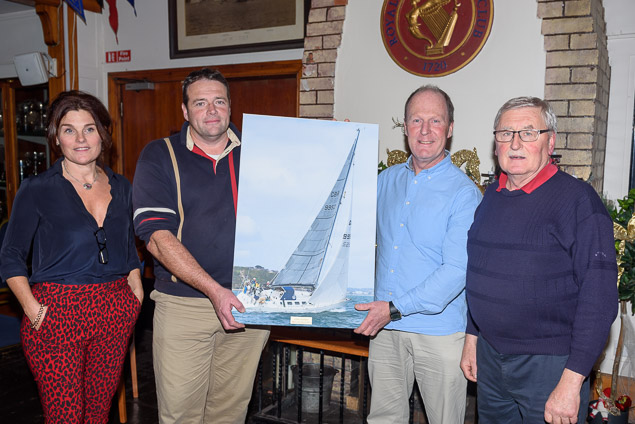 Rob Bateman (second from left) presents the Claire Bateman trophy to Alan Mulcahy watched by Johanna Murphy, Commodore of SCORA and Michael Murphy SCORA Treasurer
Rob Bateman (second from left) presents the Claire Bateman trophy to Alan Mulcahy watched by Johanna Murphy, Commodore of SCORA and Michael Murphy SCORA Treasurer
Irish South Coast Offshore Sailors Elect First Lady Commodore
Hello and welcome to my weekly Podcast …. Tom MacSweeney here ….
“I intend to promote sailing in general and also to promote coastal offshore racing.”
That was the declaration of Johanna Murphy from the Great Island Sailing Club in Cobh in Cork Harbour when she was elected the first female sailor to become Commodore of the South Coast Offshore Racing Association (SCORA).
“My main aim at SCORA will be to promote sailing as widely as possible. While racing is at the core of SCORA, sailing can’t be serious all the time. That also has to be taken into consideration and we will be doing that.”
The large attendance at the annual general meeting, despite the very bad weather of Tuesday night, showed positive interest in the sport in the South. There was discussion about new events and, inevitably, the current handicaps on boats engaged in racing. It was agreed that an examination of handicaps would be reported back to members. The new structure of the Cork Harbour League was approved by the SCORA meeting – Friday evenings in June, Saturday afternoons in July and September, with club At Home events included and racing for both spinnaker and whitesail boats. This revised approach, as previously reported on Afloat was agreed by the three harbour clubs – MBSC, RCYC and GISC at an earlier meeting.
Listen to the podcast below as Commodore Johanna Murphy outlines to me her plans for leading SCORA.
SCORA AGM to Discuss Cork Harbour Combined Leagues, Class Bands for 2019
The 2018 South Coast of Ireland Offshore Racing Association (SCORA) AGM will take place in the Royal Cork Yacht Club on Tue December 4th at 7.30pm.
Among the items on the agenda will be a discussion on the future of the Cork harbour combined sailing leagues with inputs from MBSC, GISC and RCYC.
Following on from last years AGM, a full review of the existing South Coast class bands will take place, together with a report on the future of offshore racing and the possible running of a race to Dunmore East in 2019.
Having completed his term of office, outgoing SCORA Commodore Kieran O'Connell will hand over the roll to Johanna Murphy from GISC, who will become the first female to lead the SCORA organisation.
"A special presentation will be made by the Bateman family, in memory of the late Claire"
In addition to the eighteen prizewinners from the six cruiser classes, a special presentation will be made by the Bateman family, in memory of the late Claire, to the competitor of the season who through participation in a variety of South coast events, helped to introduce many newcomers to the thrill of sailing.
SCORA Meet Drives Cruiser Racing Forward on the South Coast
After a few negative years, resulting in some despondency about the future of cruiser racing, the annual meeting of SCORA, the South Coast Offshore Racing Association, had a more positive atmosphere, with a good attendance of skippers, boat owners and club representatives and quite a few practical suggestions about driving the racing scene forward.
SCORA Commodore Kieran O’Connell, who is also Rear Commodore for Keelboats at the Royal Cork YC in Crosshaven, has been talking up the levels of participation in the racing scene, so I was interested to find out if this was the case at the meeting.
In fact, it seemed to be so and was reflected with a wide-ranging debate, from developing Class 4 for the smallest boats, to bring more people into racing, to the length of races, a desire for more racing amongst Cork Harbour sailors outside of the harbour confines, developing more inter-club racing and how to bridge the gap where young sailors are lost to the sport, between dinghy racing and cruisers.
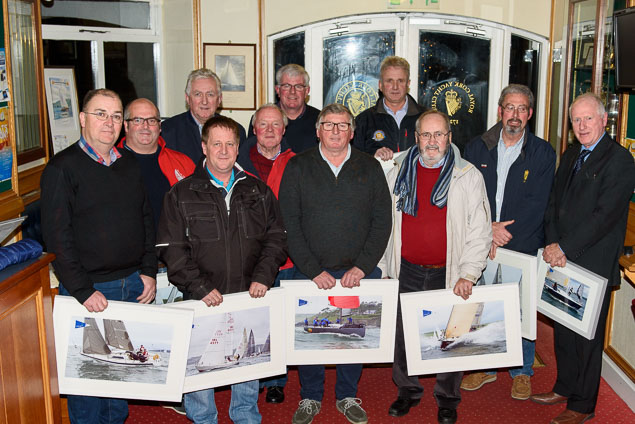 2017 Scora winners at RCYC Photo Bob Bateman
2017 Scora winners at RCYC Photo Bob Bateman
This practicality was reflected in a debate about the often contentious issue of boat handicaps. There was general agreement that the concentration on handicapping should primarily be at club level, where it could best be used to stimulate more participation locally and strengthen the clubs. Where boats wanted a national handicap to race in other locations, that would have to take account of and dealt with, but the emphasis should be in the clubs.
There was also a desire expressed for longer duration races, because shorter races discouraged participation.
Encouraging young people to move on from dinghies to cruiser racing was debated. “We are not getting enough young people from dinghies into cruiser racing,” was a generally agreed view. There is no obvious solution to this, but it was agreed that to encourage younger sailors into cruisers they had to be given specific roles aboard boats, not just brought onto a boat “to sit on the rail.”
Some things don’t change, but this meeting indicated that there is a lot of positive change and a better future ahead, it seems, for cruiser racing, which SCORA Commodore Kieran O’Connell says is on the increase, with more boats racing in the past season than previously.
Listen to Kieran O’Connell on my weekly Podcast below
SCORA Prizes To Be Awarded Tonight at Royal Cork Yacht Club
Connor Phelan's Jump juice will be among the winners saluted tonight at the South Coast Offshore Racing Association (SCORA) agm and prizegiving that will be held in the Royal Cork Yacht Club at 7.45pm writes Bob Bateman.
Cruiser–racer fortunes are on the up in Cork harbour according to SCORA Commodore Kieran O'Connell who gave a recent confident forecast that fleet numbers are on the 'way back'.
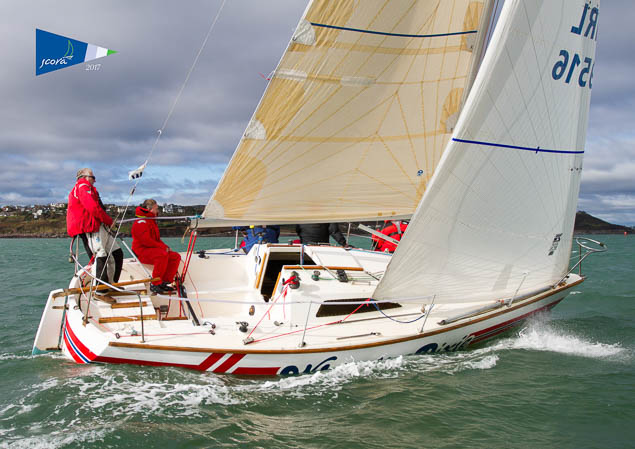 Tom McCarthy's Whistling Dixie was third in ECHO White Sails division. Photo: Bob Bateman
Tom McCarthy's Whistling Dixie was third in ECHO White Sails division. Photo: Bob Bateman
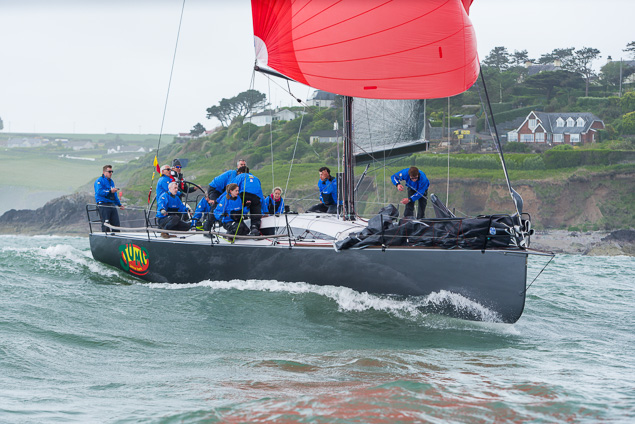 Conor Phelan's Jump juice is among the winners at SCORA tonight Photo: Bob Bateman
Conor Phelan's Jump juice is among the winners at SCORA tonight Photo: Bob Bateman
As well as Phelan's Class Zero and One victory, among tonight's other highlights is Tom Roche's first in ECHO in the same division with Kinsale Yacht Club entry Meridian.
RCYC entry Bad Company (Desmond, Ivers) was the IRC two winner with Waterford Harbour yacht Slack Alice skippered by Shane Statham second.
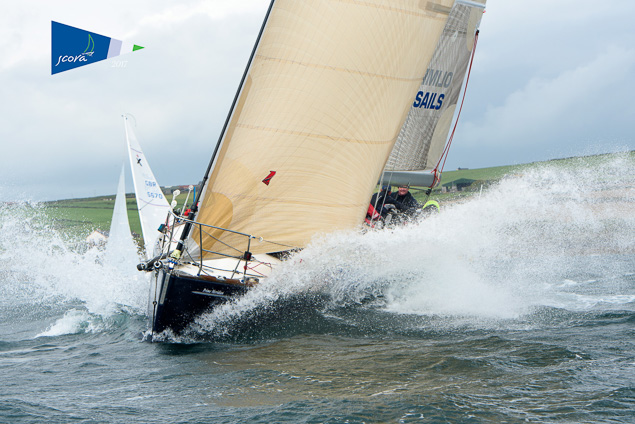 Kinsale Yacht Club entry Meridian (Tom Roche) Photo: Bob Bateman
Kinsale Yacht Club entry Meridian (Tom Roche) Photo: Bob Bateman
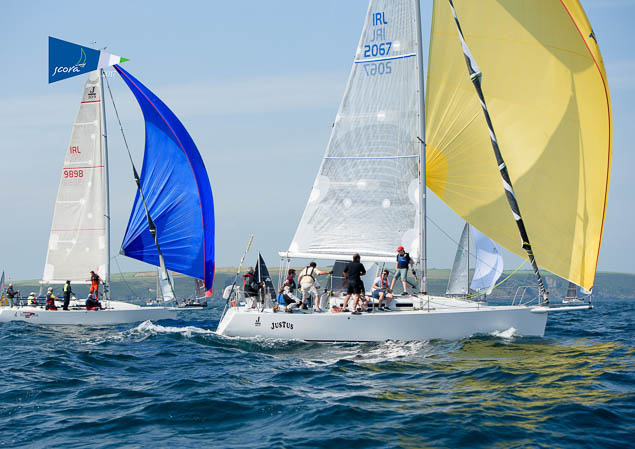 Dan Buckley's Justus (yellow spinnaker) was third in IRC Zero Photo: Bob Bateman
Dan Buckley's Justus (yellow spinnaker) was third in IRC Zero Photo: Bob Bateman
A full list of prizewinners are below.
Among the matters for discussion at tonight' meeting will be the perennial question of Class Bands for handicapping. This is because the IRC certs change and consequently bands need updating on a regular basis.
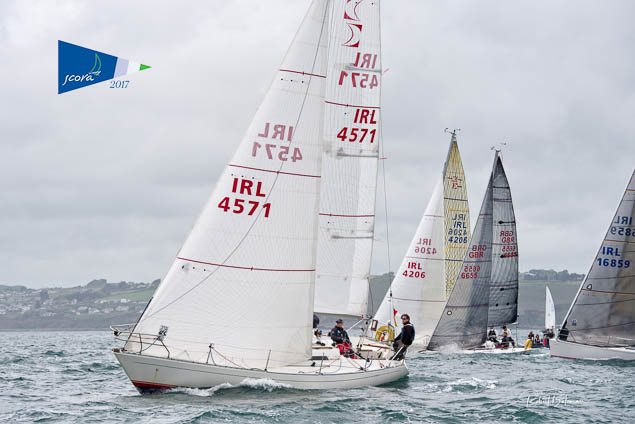 Waterford Harbour Sailing Club's Flyover, a Sigma 33, skippered by David Marchant was the IRC 3 winner Photo: Bob Bateman
Waterford Harbour Sailing Club's Flyover, a Sigma 33, skippered by David Marchant was the IRC 3 winner Photo: Bob Bateman
Agenda
1. Finance
2. SCORA Leagues
3. Combine club league in Cork
4. Class handicap bands for 2018
5. ICRA Training Grants
6. ICRA Crew Point
7. AOB
8. Prize Giving
List of 2017 prizewinners: Scora league
Jump juice Connor Phelan 1st IRC 0/1 2nd Echo
Meridian Tom Roche 1st Echo 0/1 2rd Echo
Justus Dan Buckley 3rd IRC 0/1 3rd Echo
Slack Alice Shane Statham 2nd IRC 2 3rd Echo
Bad Company Desmond,Ivers 1st IRC 2 2nd Echo
Artful Dodger Finbarr O Regan 1st Echo 2 3rd IRC
Cracker Denis Byrne 3rd Echo 3
Ye Gotta Wanna Dave Lane and Sinead Enright 3rd IRC 3
No Gnomes Leonard Donnery 2nd IRC 3 2nd Echo
Flyover David Marchant 1st IRC 3 1st Echo
Nieulargo Denis Murphy 1st IRC W/S 1 2nd Echo
Indulgence Aidan Heffernan 1st Echo W/S 1 2nd IRC
Magnet Kieran O Brien 3rd IRC W/S 1 3rd Echo
Prometheus Paul Murray 1st IRC W/S 2
Bandit Richard Leonard 2nd IRC W/S 2 2nd Echo
Whistling Dixie Tom Mc Carthy 3rd Echo W/S 2
Aramis Pat Vaughan 1st Echo W/S 2 2nd IRC
Scora Cork Harbour league
Alpacca Paul Tingle 1st all in IRC
No Gnomes Leonard Donnery 1st all in Echo
Indulgance Aidan Heffernan 1st W/S IRC
Sea Dragon Frank Caul 1st W/S Echo




























